● First to arrive in what is now named New Zealand were the ancestors of the Kiwi Bird. There are three theories about how they arrived in New Zealand.
- The first is that the kiwi’s ancestor was already around when New Zealand broke away from Antarctica and Australia 60 million years ago.
- The second debate is that as the land broke away, kiwis walked from island to island as the land rose and fell, eventually arriving in New Zealand.
- The third is that the kiwi’s ancestor flew from island to island to reach New Zealand. There is growing evidence to suggest this is most likely.
● Only a few hundred years after the first humans, Dutchman Abel Tasman was the first European to discover New Zealand in 1642. His men were the first Europeans to have a confirmed encounter with the Maori, and as might be expected, things didn’t go well.
At any rate, no one called New Zealanders Kiwis until World War II when Australian’s coined the name. New Zealander’s would use a boot shine with an image of a kiwi on the tin. The Australian’s noticed this and started calling them kiwis! The name caught on and is now used worldwide.
● Late comer on the scene is the Kiwi fruit. Its proper name is Chinese Gooseberry, and the plant is native to China. Seeds were brought to New Zealand in 1904 by Mary Isabel Fraser, the principal of Wanganui Girls’ College, who had been visiting mission schools in China. They were planted in 1906 by a Whanganui nurseryman, Alexander Allison, and the vines first fruited in 1910. People thought the fruit had a gooseberry flavor and began to call it the Chinese gooseberry, although it is not related to the family to which gooseberries belong.
TODAY’S SUBJECT: THE KIWI BIRD
Kiwi are flightless birds native to and found only in New Zealand. The bird is the size of domestic chicken [approximately 2 to 4 pounds and 14” to 18”] and the smallest living ratite, a category of mostly large, flightless birds with a ratite breastbone, including the ostrich, rhea, emu, cassowary, and kiwi, together with the extinct moa and elephant bird.
The Kiwi’s closest relative is the extinct elephant bird of Madagascar.
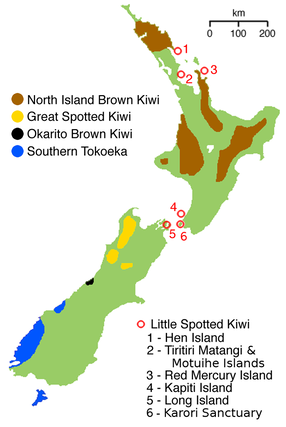
There are five recognized species of Kiwi birds: Brown Kiwi, Great Spotted Kiwi, Little Spotted Kiwi, Rowi and Tokoeka.
The Rowi is the rarest type of kiwi. There is a little confusion regarding the names and numbers of species because several have different names due to the area in New Zealand where they are found but are still the same species.
Image credit: Grutness on en.wikipedia modified by Tony Wills - Own work. Originally from en.wikipedia;
Image Source: wikipedia.org/wiki/Kiwi_(bird)
Image Credit: Rod Morris, NE Dept. of Conservation Image Source: tookooldoggies.blogspot.com/2012/08/
Image Source: nzbirdsonline.org.nz/species/north-island-brown-kiwi Image Source: animals-unique.blogspot.com/
\
Image Credit: Glen Fergus - Stewart Island, NZ Image Source: doc.govt.nz/birds/birds-a-z/kiwi/rowi/
CC BY-SA 2.5, Image Source: Image Source: birdingnz.co.nz/little-spotted-kiwi
commons.wikimedia.org/index.php?curid
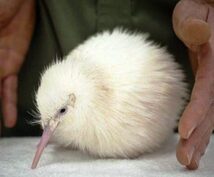
Rowi may be rare, and there are only 450 left in the world, but Manukura, a white kiwi, is the one known in the world. She was born at the National Wildlife Centre Pukaha, North Island of New Zealand, on 1 May 2011.
Manukura is not albino (where there is a lack of melanin that makes pigmentation white and features pink eyes), but, pure white, which means she is the rare progeny of two parents who carry the recessive white feather gene.
Her parents came from predator-free Little Barrier Island along with 28 other kiwi in 2010. The purpose of the translocation was to boost kiwi population at Pukaha. The result of that breeding season was 14 healthy chicks, which were released into the wild. The Rangitane o Wairarapa iwi (the local tribe) saw the chick as a tohu (sign) of new beginnings and gave her the name ‘Manukura’, which translated means “of chiefly status”.
A LITTLE PREHISTORIC HISTORY
Part of the reason to pay particular attention to these birds is the way in which the Kiwi evolved somewhere else, made its way to New Zealand ‒ the only place in the world where they have existed since before the evolution of homo sapiens ‒ and adapted to its new home.
Originally, scientists believed the Kiwi was related to the Australian ratites [large flightless birds]. However, recent DNA research shows the Kiwi closely related to an extinct ratite from the Madagascar area, not Australia as previously believed.
Kiwi and the Madagascar elephant bird were rather close cousins which separated into their own individual families and genus about 50 to 60 million years ago. By this gime fhe continent of Gonwanda had broken into much smaller lands masses. and thefe would have been no land passage to New Zealand or Australia. Somehow they must have flown. Source: theconversation.com/rewriting-the-origin-of-new-zealands-kiwi-bird-history
New Zealand was completely unoccupied by any humans until the Maori arrived in the 1300s in several large migrations. New Zealand had evolved with no land mammals except three species of bats. Bats were the only predators until Dutch explorer Abel Tasman discovered it (again) in 1642. European settlers and traders brought other animals and livestock.
In the time the Maori had alone with the kiwi, the birds became an important part of their culture and religion. For Maori, kiwi are, in effect, our elder siblings. And, like a good older brother or sister, they are very protective of us. That's partly why in certain places, Maori patrol the forests nightly to keep the Kiwi safe.
ADAPTATION NOVELTIES OF THE KIWI
● Flightless and Feathers
Like all flightless ratites [ostrich, emu, rhea, and cassowary], Kiwis have no keel on the sternum to anchor wing muscles. The vestigial wings are so small that they are invisible under the bristly, hair-like, two-branched feathers.
The bones of most other birds, when adults, are hollow with no marrow because of the minimization of weight for flight. Since Kiwis developed without flight, thus without weight constraints, they have bone marrow. Also, they also have no tails.
● Eyesight
Kiwis might as well be blind. Their eyes are the smallest relative to body mass in all avian species resulting in the smallest visual field as well. The eye evolved for a night time lifestyle, and kiwi rely more on their other senses. The Kiwi eye is so underdeveloped that blind specimens have been found in nature which are perfectly adapted to the lifestyle.
Writers: Now you can substitute “Blind as a Kiwi” for the tired “Blind as a bat.”
The kiwi's mostly nocturnal habits may be a result of habitat intrusion by predators, including humans. In areas of New Zealand where introduced predators have been removed, such as sanctuaries, kiwi are often seen in daylight.
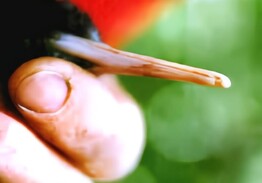
The Kiwi beak is long, pointed, and sometimes a little curved. They are unique among birds to have their nostrils at the end of the beak which gives Kiwis an exceptional sense of smell that is rare for birds. I couldn’t find good close-up photos which show the nostrils or beak details.
The beak is more than just an unusual shape . It functions as a vibration detector. Sensory pits at ImageSource: mercurybay.co.nz/local/kiwiinfo. the tips of their beaks allow them to sense prey underground. They can locate worms, insects, and other prey buried several centimeters underground using their beaks and well-developed sense of smell. The cat-like whiskers at the base of the beak assist getting around at night. Kiwi also have a good sense of hearing and touch.
● Mating and Reproduction
During mating season [June to March] the male kiwi will follow the female around, grunting at her until she notices him. If she is not interested, she will either run away or try and scare him off. If she is interested, they mate and will remain a monogamous couple for their entire lives ‒ which can be 25 to 50 years.
Once mated, they live in pairs and call to each other at night, and meet in the nesting burrow every three days. The relationship tends to be quite volatile and physical, the female generally calling the shots over her smaller partner. However, these relationships can last as long as 30 years.
Comparison of chicken egg to Kiwi egg
Image Source: pholder.com/u/siegward-the-thicc/
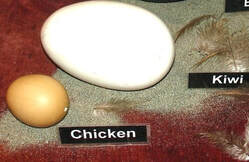
Although females are usually larger than males, they carry only one egg… but what an egg! The Kiwi is about the same size as a chicken, but the Kiwi egg is six time larger than a chicken egg. The egg is about 20% of the female’s body size.
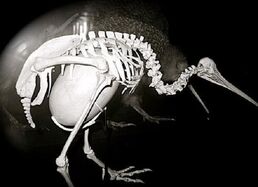
Once the female kiwi lays her egg, the male takes over and actually sits on the egg until it hatches while the female forages for food. Her stomach will have shrunk so much that she needs to replenish herself. Image source: pinterest.com/pin/855402522950562018/
Because of the size of the egg, it takes about 80 days to hatch, leaving the male Kiwi more or less like Dr. Suess’s Horton the Elephant who is hatching an egg and is, “tired and bored and has kinks in his legs.”
Thanks to Dad, kiwi chicks hatch pretty much ready to run, with a belly full of yolk they can live off of for their first two and a half weeks of life. Brown Kiwi will leave the nest as young as 4-6 weeks old, forced out by their parents who often need the burrow for another egg. Great Spotted Kiwi may stay in the nest for a year or longer, and Rowi and Stewart Island tokoeka can remain with their parents for up to seven years.
ENVIRONMENTAL STATUS
Extinction rates for birds in New Zealand are high. According to the DOC, 34 per cent of endemic land and freshwater birds and five per cent of sea birds have already been lost. Today, more than a third of bird species are considered threatened—one step away from endangered. Several species of Kiwi have been on the endangered list, but through the effort of the New Zealand Department of Conservation, at least two species have now move from “endangered” to “threatened”.
Still, loss of habitat throughout the country threatens the continued existence of this bird. The natural habitat of the Kiwi is the subtropical and temperate areas with coniferous trees and shrubs or beech forests, but they are now being forced to adapt to different habitat, such as sub-alpine scrub, tussock grassland, and the mountains. Predators are also a major cause of depletion.
There are a number of kiwi predator-free sanctuaries throughout New Zealand, and the Department of Conservation relocation and breeding programs have been successful. Still, only about 68,000 kiwis are left in existence. On average, 2% of kiwi die each week (around 20 kiwi per week). It is estimated that only 5% of kiwi chicks survive to adulthood.
Hopefully, the kiwi will continue to survive in today’s world.
JUST SAYIN
□
NOTE: Collective nouns for birds.
A cacophony of of Kaka, A Tribe of Kiwi, A Cluster of Knots, A fling of Knots, and A tangle of Knotsy.
Sources:
https://en.wikipedia.org/wiki/Kiwi_(bird)?msclkid=5342abaab84011ec909987622b7c7485
https://commons.wikimedia.org/w/index.php?curid=3509003
https://en.wikipedia.org/wiki/Kiwi_(bird)?msclkid=5342abaab84011ec909987622b7c7485
http://commons.wikimedia.org/w/index.php?curid=69887040
https://www.nzbirdsonline.org.nz/species/north-island-brown-kiwi
http://tookooldoggies.blogspot.com/2012/08/prey-of-dog-new-zealand.html
https://www.doc.govt.nz/nature/native-animals/birds/birds-a-z/kiwi/rowi/
http://animals-unique.blogspot.com/2012/06/kiwi-unique.html
https://www.birdingnz.co.nz/birds-of-new-zealand/little-spotted-kiwi
https://www.newzealand.com/int/feature/arrival-of-maori/
https://ainawgsd.tumblr.com/post/164109629934/kiwi-kiwi-or-kiwis-are-flightless-birds-native-to
https://pholder.com/u/siegward-the-thicc/
https://www.pinterest.com/pin/855402522950562018/
https://en.wikipedia.org/wiki/Kiwi_(bird)?msclkid=5342abaab84011ec909987622b7c7485
https://www.svasthlife.com/fruits/faq-kiwi-fruit-native-to-which-country.html
https://www.learnz.org.nz/location192/bg-easy-f/european-discovery-of-new-zealand
http://mercurybay.co.nz/local/kiwiinfo.php
https://www.wayfaringkiwi.com/fun-facts-about-the-kiwi-bird/?msclkid=87dde45db84311ec975abefee085f081
https://kiwigrubbox.com/blogs/news/kiwi-bird-facts?msclkid=87de25bab84311ecb9b2b12b94cf5c97
https://www.newzealand.com/int/feature/arrival-of-maori/
https://ainawgsd.tumblr.com/post/164109629934/kiwi-kiwi-or-kiwis-are-flightless-birds-native-to
https://pholder.com/u/siegward-the-thicc/
https://www.pinterest.com/pin/855402522950562018/
https://en.wikipedia.org/wiki/Kiwi_(bird)?msclkid=5342abaab84011ec909987622b7c7485
https://www.svasthlife.com/fruits/faq-kiwi-fruit-native-to-which-country.html
https://www.learnz.org.nz/location192/bg-easy-f/european-discovery-of-new-zealand
http://skifmnetwork.co.nz/2020/07/02/meet-manukura-the-worlds-only-white-kiwi/
https://www.liveanimalslist.com/birds/kiwis.php
https://theconversation.com/rewriting-the-origin-of-new-zealands-kiwi-bird-ancestors-27022#:~:text=It%20showed%20that%20the%20kiwi%20%E2%80%93%20the%20national,evolutionary%20mystery%20that%20has%20lasted%20for%20150%20years.?msclkid=1aafb15fbc1e11eca3d146
https://almazrestaurant.com/do-kiwis-have-feathers/#:~:text=How%20many%20feathers%20does%20a%20kiwi%20have%3F%20Their,small%20pygostyle.%20Why%20do%20kiwis%20have%20no%20wings%3F?msclkid=98145265bc2711ec951837be859d6af5
https://nzhistory.govt.nz/the-chinese-gooseberry-becomes-the-kiwifruit?msclkid=4717b9adbcff11ecb931a032507b5600
https://www.readersdigest.ca/culture/kiwi-bird/
Kiwis Facts, Flightless Bird Habitat, Diet, Information with Pictures (liveanimalslist.com)


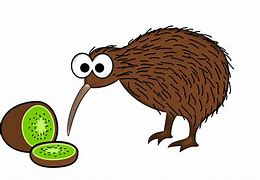

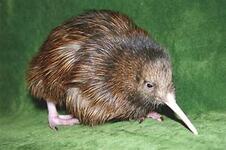
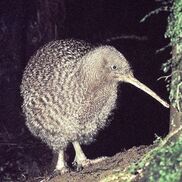
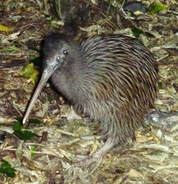
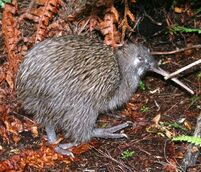
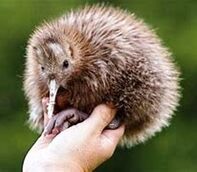
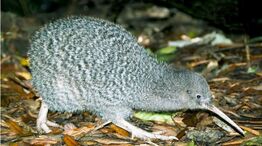
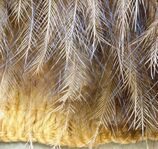
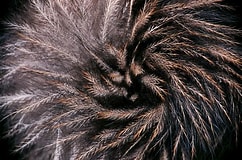
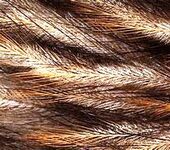
 RSS Feed
RSS Feed